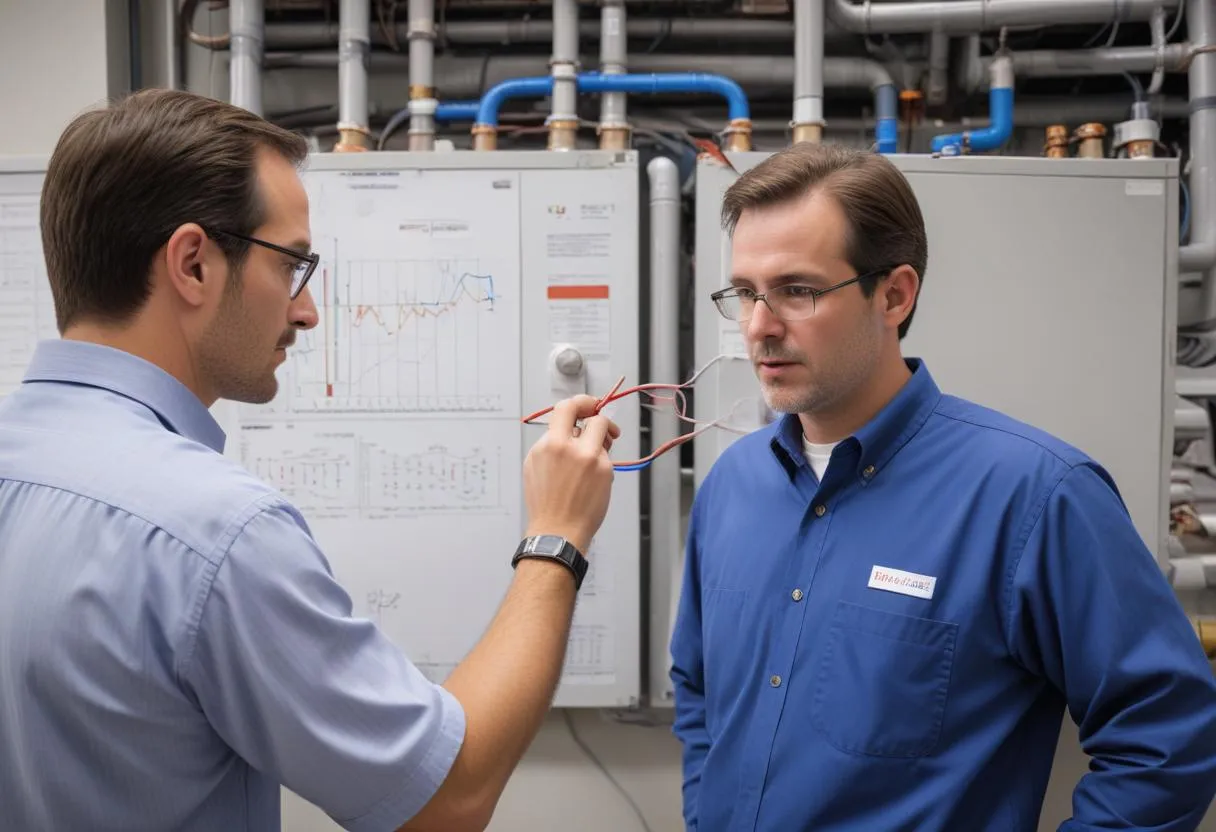 To grasp the intricacies of a pump curve, it is essential to understand its various components. Each part provides vital information that helps in evaluating a pump’s performance under different conditions.
To grasp the intricacies of a pump curve, it is essential to understand its various components. Each part provides vital information that helps in evaluating a pump’s performance under different conditions.
Flow Rate: Usually measured in gallons per minute (GPM) or liters per minute (LPM), the flow rate indicates how much fluid the pump can move within a specific time frame. It is one of the most prominent indications on the curve and typically runs horizontally along the bottom axis. Flow rate is crucial for matching the pump’s output with the system’s requirements.
Head: Measured in feet or meters, head represents the height at which a pump can raise water. Essentially, it denotes the discharge pressure the pump achieves to overcome gravitational effects and resistance within the pump system. This metric is typically plotted along the vertical axis on the left side.
Efficiency: Pump efficiency is a percentage value that represents how effectively a pump converts the energy it consumes into fluid movement. It is depicted by a series of contour lines or shaded areas that often run diagonal across the flow-head graph. Pumps typically have varying efficiency levels across their operational range, and this part of the curve guides users in choosing operating points that maximize energy utilization.
Power Consumption: Indicated in kilowatts (kW) or horsepower (HP), this component shows the amount of power required at various levels of head and flow rate. Similar to efficiency, it often appears as curves that intercept various flow rates and heads, allowing one to comprehend how much energy will be consumed for specific pumping conditions.
Net Positive Suction Head Required (NPSHR): This metric is vital in preventing cavitation within the pump. NPSHR is the minimum pressure needed on the suction side of the pump to keep the pump from cavitating, typically presented as a curve on the pump graph. It’s important to ensure the system operation point always meets or exceeds the NPSHR.
Nominal Diameter: Sometimes included near the top or bottom of the chart, this indicates the size of the pump inlet and outlet ports, which correlates to the pump’s maximum flow capability.
To effectively utilize this data, here is an example table showing hypothetical values for a typical pump:
| Flow Rate (GPM) | Head (Feet) | Efficiency (%) | Power (HP) | NPSHR (Feet) |
|---|---|---|---|---|
| 100 | 50 | 65 | 5 | 10 |
| 200 | 45 | 70 | 10 | 12 |
| 300 | 40 | 65 | 15 | 15 |
Understanding each component of the pump curve can significantly aid in selecting the appropriate pump for specific needs and operating it efficiently. This knowledge ensures that the pump operates within its optimal range, thereby enhancing longevity and reducing operational costs.
Interpreting performance from pump curves
When interpreting the performance of a pump using a pump curve, it’s essential to analyze how different metrics interact to influence overall pump functionality and appropriateness for specific applications. This evaluation involves looking at the precise intersection of flow rate, head, efficiency, power consumption, and NPSHR.
To start, identify the intended flow rate and head required for your system. This is your initial operating point. The intersection of these values on the pump curve will provide insights into the other critical performance metrics.
Here’s how to interpret the provided information:
- Flow Rate vs. Head: This relationship is direct from the curve. Higher flow rates often correlate with lower head capacity. It’s crucial to ensure the chosen pump can meet the maximum required flow rate without dropping below the necessary head.
- Efficiency: At the operating point, follow the efficiency contours to see the efficiency percentage. The optimal pump selection is one that operates close to its peak efficiency at the estimated system requirements. Operating a pump near its efficiency peak minimizes energy consumption and operating costs.
- Power Consumption: At the same operating point, note the required power consumption. Cross-referencing both the head and flow rate with power will indicate how much energy will be consumed under normal operating conditions. If power consumption is disproportionately high, it might be worth considering a pump with better suited specifications.
- NPSHR: Ensuring that the system’s available NPSH exceeds the pump’s NPSHR at the operating point is crucial. This prevents cavitation, which can cause significant damage and reduced performance.
Here is an example of applying this interpretation method using hypothetical data:
| Operating Condition | Flow Rate (GPM) | Head (Feet) | Efficiency (%) | Power (HP) | NPSHR (Feet) | System NPSH Available (Feet) |
|---|---|---|---|---|---|---|
| A | 250 | 47 | 68 | 12 | 11 | 15 |
| B | 150 | 52 | 65 | 8 | 10 | 15 |
In scenario A, although the efficiency is reasonably high, this operating point should be considered secure as the system’s NPSH available exceeds the pump’s NPSHR, ensuring safe operation without cavitation.
By following these steps and carefully analyzing the pump curve, you can select a pump that not only meets but optimizes your system’s requirements. This thorough interpretation aids in making informed decisions about pump selection and provides a framework for achieving operational efficiency and reliability.
Practical applications of pump curve analysis
 Analyzing pump curves is critical in practical applications, where diverse conditions and varying system requirements can determine the success or failure of pumping operations. Here are a few practical aspects where understanding and interpreting these curves can be paramount.
Analyzing pump curves is critical in practical applications, where diverse conditions and varying system requirements can determine the success or failure of pumping operations. Here are a few practical aspects where understanding and interpreting these curves can be paramount.
System Design and Pump Selection: Engineers and designers rely heavily on pump curves when designing fluid systems such as in HVAC, irrigation, or municipal water supply. Using these curves helps in selecting the most suitable pump that fits the system requirements. For instance, if a system requires a flow rate of 500 GPM at a head of 100 feet, the designer will choose a pump which best meets these criteria at the highest efficiency point visible on the pump curve.
- The choice affects energy consumption, costing, and overall system efficiency.
- Incorrect selection could lead to frequent breakdowns or inadequate system performance.
Performance Testing and Verification: After installation, pump curves are essential for performance verification. By comparing the manufacturer’s curve with actual field measurements such as flow rate, head, and power, operators can confirm if the pump is functioning as expected. Discrepancies might reveal issues like pipe blockages or the need for system adjustments.
| Measured Condition | Flow Rate (GPM) | Head (Feet) | Power (HP) |
|---|---|---|---|
| Expected | 300 | 70 | 20 |
| Actual | 285 | 68 | 18 |
Troubleshooting: Understanding pump curves is instrumental in diagnosing issues within a pumping system. For example, if a pump is producing less flow at a higher head than designed, it may indicate a clogging issue or a defect in the pump itself. Technicians can use the curve to isolate the problem area and implement corrective measures efficiently.
Energy Optimization: By operating a pump near its highest efficiency point as highlighted by the curve, significant energy savings can be realized. Energy assessments often begin with an analysis of current performance compared to the pump’s curve, identifying areas for potential efficiency improvements such as adjusting impeller sizes or pump speed adjustments.
Long-term Maintenance and Cost Savings: Long-term pump operation and maintenance can be optimized using pump curves by planning operational schedules where pumps run mostly at points of higher efficiency. This not only extends the life of the pump but also reduces operational costs due to lower energy consumption and reduced wear and tear.
In conclusion, practical applications of analyzing pump curves extend far beyond simple pump selection. They encompass performance verification, troubleshooting, energy savings, and maintenance optimization, all of which are crucial for cost-effective and efficient pump operation.